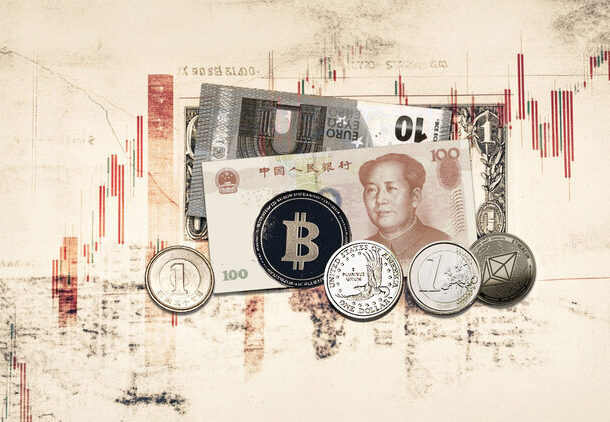
Gold prices remained broadly unchanged in India on Thursday, according to data compiled by FXStreet.
The price for Gold stood at 9,130.02 Indian Rupees (INR) per gram, broadly stable compared with the INR 9,121.96 it cost on Wednesday.
The price for Gold was broadly steady at INR 106,490.70 per tola from INR 106,396.80 per tola a day earlier.
| Unit measure | Gold Price in INR |
|---|---|
| 1 Gram | 9,130.02 |
| 10 Grams | 91,300.14 |
| Tola | 106,490.70 |
| Troy Ounce | 283,975.40 |
Daily Digest Market Movers: Gold price is underpinned by rising trade tensions, modest USD downtick
US President Donald Trump issued tariff notices to eight minor trading partners on Wednesday and said that there will be no extensions for the countries that receive letters. Furthermore, Trump stressed that any retaliatory levies will be added to the existing US tariffs.
Adding to this, Trump announced that the 50% tariff on copper imports will take effect on August 1. This adds a layer of uncertainty in the markets and turns out to be a key factor driving some follow-through safe-haven flows towards the Gold price on Thursday.
Minutes from the Federal Reserve’s June 17-18 policy meeting revealed that most policymakers remain worried about the risk of rising inflationary pressure on the back of Trump’s aggressive trade policies. Moreover, some policymakers felt that no rate cut would be needed at all.
However, most participants expected that rate cuts would be appropriate later this year and that any price shock from tariffs would be temporary or modest. This contributed to the fall in the US Treasury bond yields, triggered by a strong 10-year government debt auction.
The US Dollar extends its retracement slide from a two-week high for the second straight day and turns out to be another factor that benefits the XAU/USD pair. Traders now look forward to the release of US Weekly Jobless Claims and speeches by Fed officials for a fresh impetus.
FXStreet calculates Gold prices in India by adapting international prices (USD/INR) to the local currency and measurement units. Prices are updated daily based on the market rates taken at the time of publication. Prices are just for reference and local rates could diverge slightly.
Gold FAQs
Gold has played a key role in human’s history as it has been widely used as a store of value and medium of exchange. Currently, apart from its shine and usage for jewelry, the precious metal is widely seen as a safe-haven asset, meaning that it is considered a good investment during turbulent times. Gold is also widely seen as a hedge against inflation and against depreciating currencies as it doesn’t rely on any specific issuer or government.
Central banks are the biggest Gold holders. In their aim to support their currencies in turbulent times, central banks tend to diversify their reserves and buy Gold to improve the perceived strength of the economy and the currency. High Gold reserves can be a source of trust for a country’s solvency. Central banks added 1,136 tonnes of Gold worth around $70 billion to their reserves in 2022, according to data from the World Gold Council. This is the highest yearly purchase since records began. Central banks from emerging economies such as China, India and Turkey are quickly increasing their Gold reserves.
Gold has an inverse correlation with the US Dollar and US Treasuries, which are both major reserve and safe-haven assets. When the Dollar depreciates, Gold tends to rise, enabling investors and central banks to diversify their assets in turbulent times. Gold is also inversely correlated with risk assets. A rally in the stock market tends to weaken Gold price, while sell-offs in riskier markets tend to favor the precious metal.
The price can move due to a wide range of factors. Geopolitical instability or fears of a deep recession can quickly make Gold price escalate due to its safe-haven status. As a yield-less asset, Gold tends to rise with lower interest rates, while higher cost of money usually weighs down on the yellow metal. Still, most moves depend on how the US Dollar (USD) behaves as the asset is priced in dollars (XAU/USD). A strong Dollar tends to keep the price of Gold controlled, whereas a weaker Dollar is likely to push Gold prices up.
(An automation tool was used in creating this post.)
Information on these pages contains forward-looking statements that involve risks and uncertainties. Markets and instruments profiled on this page are for informational purposes only and should not in any way come across as a recommendation to buy or sell in these assets. You should do your own thorough research before making any investment decisions. FXStreet does not in any way guarantee that this information is free from mistakes, errors, or material misstatements. It also does not guarantee that this information is of a timely nature. Investing in Open Markets involves a great deal of risk, including the loss of all or a portion of your investment, as well as emotional distress. All risks, losses and costs associated with investing, including total loss of principal, are your responsibility. The views and opinions expressed in this article are those of the authors and do not necessarily reflect the official policy or position of FXStreet nor its advertisers. The author will not be held responsible for information that is found at the end of links posted on this page.
If not otherwise explicitly mentioned in the body of the article, at the time of writing, the author has no position in any stock mentioned in this article and no business relationship with any company mentioned. The author has not received compensation for writing this article, other than from FXStreet.
FXStreet and the author do not provide personalized recommendations. The author makes no representations as to the accuracy, completeness, or suitability of this information. FXStreet and the author will not be liable for any errors, omissions or any losses, injuries or damages arising from this information and its display or use. Errors and omissions excepted.
The author and FXStreet are not registered investment advisors and nothing in this article is intended to be investment advice.








